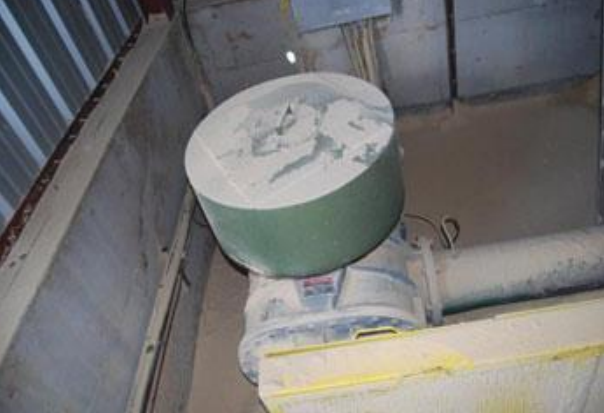
Do you know what the substance is covering this workplace and what kind of hazard it may pose’

Combustible dust, such as dust from wood, metal, plaster, sugar or other sources, is a serious safety hazard. As the name suggests, such dust can catch fire and even explode. (Watch this video to learn more about the hazards of combustible dust.)
This picture from a handout from WorkSafeBC shows the surfaces of a workplace covered in what appears to be dust. If even a handful of fine dust can fuel an explosion, imagine what could happen if the amount of dust shown here was exposed to heat or an ignition source.
WINTER & COMBUSTIBLE DUST
Although combustible dust is always a safety hazard that must be properly addressed, in the winter, the hazards dust poses increase’and some of the safety measures you have in place to control it may not work as well or at all.
The colder weather makes combustible dust more dangerous because the low humidity levels make dust easy to disperse and ignite. In addition:
- Control measures and clean up practices that rely on the use of water may not be suitable or effective
- Openings such as bay doors and wall dampers may be closed, increasing the degree of enclosure and reducing natural ventilation
- Ventilation may be reduced or shut down to conserve heat
- Re-circulation of air from exhaust systems may also increase
- Portable heating units, such as space heaters, may introduce additional ignition sources into workplaces.
So now is a good time to look for any additional risks associated with the impact of the season and weather on combustible dust accumulations in your workplace and the safety measures you already have in place to control such dust.
For example, you may need to implement alternative dust control measures that take into account the temperature and changes to the workplace operations and conditions.
In addition, if you use space heaters in the workplace, make sure that you comply with any portable heater requirements in your jurisdiction’s OHS laws. For instance, make sure not to locate such heaters in areas containing combustible dust (or near other flammable materials).
Also, implement proper housekeeping practices for cleaning up dust in the workplace and train workers on the hazards posed by combustible dust. For example, give them this handout as part of a safety talk on this hazard.
